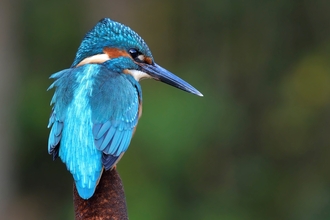Invasive non-native plant species can have a very detrimental impact on native wildlife, spreading into habitats and out-competing native species, which causes their decline. Some of the invasive species with the biggest impact are plants, and waterways give them an easy to spread. Seeds travel well in the water, which is why the Lower Avon Valley is a focus for mapping and removing invasive species.
Help Hampshire & Isle of Wight Wildlife Trust protect our waterways
© Lianne de Mello
Japanese knotweed, Himalayan balsam, American skunk cabbage, giant hogweed, creeping water primrose and parrots feather will be the targets for removal. These species are the most detrimental in the Avon Valley. Many of these plants escaped from gardens some years ago and have no natural pests to control them in Britain. Not only do these plants choke native species, but they can also affect other wildlife by shading streams and leaving banks vulnerable to erosion in winter.
The Lower Avon Non-Native Plants Project, funded by the Environment Agency, is looking for volunteers to help manage some of these harmful plants, particularly Himalayan balsam, in the Avon Valley. Our work is focused from Fordingbridge to Ringwood, on tributaries of the River Avon.
Volunteers should be ready for a day of demanding work as balsam pulling involves bashing through bushes, climbing fences, and pulling plants for the session. Volunteer sessions last around four hours and may mean participants get messy, as they work by the river. It is however satisfying to work with like-minded people and to be helping improve the environment. The main balsam pulling season is from May to September, so please contact Carla Broom if you would like to help.

© Ashley Basil
We are also asking landowners to inform the Trust if they have noticed invasive plant species on their land. We can then confirm the identity of the plants and add to our records, mapping their spread. In some cases, we may be able to help remove the plants to restore native wildlife, where funding allows.
Carla Broom, Trainee Ecologist, said:
“The project relies on volunteers and landowners help to make the project a success. Himalayan balsam pulling can be fun and sociable and a chance to make a real difference on stretches of stream that would normally not be accessible. With volunteers help, many stretches of these streams are now bursting with native plants, where before there was just balsam”
Please contact Carla Broom for further details about balsam pulling sessions or information on non-native invasive plants. Carla.broom@hiwwt.org.uk
Or click the link for 'Volunteers for Lower Avon Non-Native Plants Project' below.





